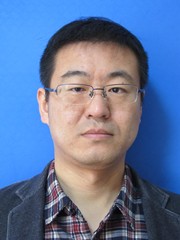
Name: Prof. Chaoquan Tang
Affiliation: China University of Mining and Technology, China
Biography: Chaoquan Tang, PhD. , Prof. of China University of Mining and Technology, head of the department of robot engineering in the School of Mechanical and Electrical Engineering, China University of Mining and Technology, and deputy director of the Key Laboratory of Mine Mechanical and Electrical Equipment in Jiangsu Province. Presided over 2 National Natural Science Foundations; One key R&D project in Jiangsu Province, one natural science fund in Jiangsu Province, one project supported by Dr. China, one project participated in the 863 project, and two national key R&D projects. The first author/correspondent published more than 20 SCI papers, and authorized more than 20 national invention patents. He is currently a member of the Committee of Cognitive System and Information Processing of China Artificial Intelligence Society, the Committee of Construction Robot of China Automation Society and the Committee of China computer federation Intelligent Robot. Research interests: design of special robots in narrow spaces, unmanned construction machinery, UAV control, SLAM, reinforcement learning, etc.
Speech Title: Autonomous Positioning and Navigation Technology of Mining Robots
Abstract: The autonomous positioning and navigation technology of mining robots is a key support for realizing intelligent and unmanned mining operations. With the increase in the depth of mineral resource extraction and the complexity of the working environment, traditional manual mining is faced with problems such as high safety risks and low efficiency. Mining robots can effectively address challenges such as the absence of satellite positioning signals underground and obstacle avoidance of dynamic obstacles through autonomous positioning and navigation technologies. This report focuses on the research of technologies such as laser SLAM, UWB (Ultra-Wideband) positioning, and multi-sensor fusion, as well as their applications in scenarios such as mining, gas extraction, and inspection. These technologies can effectively improve mining efficiency and reduce the incidence of safety accidents.
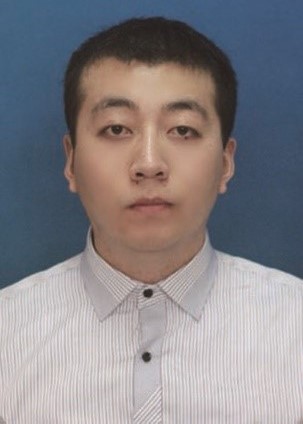
Name: Assoc. Prof. Xian Guo
Affiliation: Nankai University, China
Biography: Xian Guo received the B.S. degree in mechanical design, manufacturing, and automation from the Huazhong University of Science and Technology, Wuhan, China, in 2009, and the Ph.D. degree in mechatronics from the Shenyang Institute of Automation, Chinese Academy of Sciences, Shenyang, China, in 2016. From 2016 to 2018, he was a Postdoctoral Fellow with Nankai University, Tianjin, China, where he is currently an Associate Professor with the Institute of Robotics and Automatic Information Systems. In recent years, he has combined artificial intelligence algorithms with the motion control of bionic robots to explore the application of deep reinforcement learning in the motion control of bionic robots. At the same time, he has actively applied the deep reinforcement learning to robot game. At present, he has published more than 40 papers in important academic journals and conferences.
Speech Title: Learning-Based Motion Control for Snake Robots
Abstract: Snake robots are composed of multiple modules in series, which can generate many gaits, therefore, they have a strong ability to adapt to a variety of environments. This presentation introduces three motion control tasks for snake robots based on deep reinforcement learning: (1) a deep reinforcement learning-based arbitrary path tracking algorithm for 2D snake robots; (2) a representation reinforcement learning-based dense control method for 3D snake robots, designed for state-sparse perception; (3) a delay reinforcement learning-based dynamic winding motion control approach. Finally, future research directions are discussed.
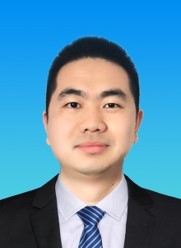
Name: Assoc. Prof. Tongshuai Sun
Affiliation: Tianjin University, China
Biography: Associate Professor Tongshuai Sun, Mechanical Engineering School, Tianjin University, China. He has been engaged in research on innovative design methods and performance analysis of underwater vehicles, as well as smooth control methods for bionic multi-configuration underwater vehicles. He has published 30 high-quality papers in journals such as IEEE/ASME TMECH, SCI CHINA TECH SCI, and OCEAN ENG. As project leader, he is responsible for the following projects:National Youth Science Foundation (Class C), the National Defense Innovation Zone Project, a sub-project under the National Key Research and Development Program, the 17th China Postdoctoral Science Foundation Special Support Project, and the Tianjin Municipal Postdoctoral Innovation Position Support Projects. Together with team members, he received the 2022 11th China Technology Market Association “Golden Bridge Award” (8/10) and the 2020 Leaderobot China Robot Application Innovation Award (8/10).
Speech Title:Design and Application of Controllable Bionic Attachment Mechanisms for Underwater Gliders
Abstract: Underwater gliders (UG) are an important platform for realizing continuous three-dimensional marine observation, which are playing a more and more prominent role in ocean economy, marine science and technology, and marine security. The flow field, hydrography, topography and other ocean conditions show obvious temporal and spatial variability, which puts forward new requirements for UGs, such as adaptability to the marine environment, deformation of the shape, and switch between navigation modes. To break through the performance bottleneck of traditional UGs with insufficient environmental adaptability, limited observation and detection capability, and weak motion maneuverability, this report proposes a design method for controllable bionic attachment mechanisms of UGs by taking the screw theory as the mathematical description and configuration tool and integrating the design concept of multi-motion fusion. Then, based on the kinematic constraint that UG attachments are similar to marine organisms with the ability of self-repair, self-expansion, self-reconfiguration and other "on-demand adjustments", this report proposes a variety of controllable bionic attachment mechanisms with engineering applications, and successfully develops a variety of novel UGs with the abilities to control the bow/tail attitude, regulate the parameters of the wing, adjust the spatial state of the wing, and regulate the wing/tail motion frequency, etc. Furthermore, this research provides a referential configuration method and theoretical guidance for the innovative design of multi-mode, multi-drive and multi-function hybrid-driven unmanned underwater vehicles.

Name: Assoc. Prof. Liangming Chen
Affiliation: Southern University of Science and Technology, China
Biography: Liangming Chen joined Southern University of Science and Technology in December 2022 as an associate professor. Before joining SUSTech, he worked as a postdoctoral researcher in the research group of Professor Xie Lihua (Fellow of the Singapore Academy of Engineering, IEEE Fellow) at Nanyang Technological University, Singapore. He and his collaborators developed the theory of angle rigidity theory and applied it to multi-agent formation control and distributed localization. As the first author, he published multiple research results in top journals in the field of control and robotics, including IEEE TAC, Automatica, IEEE TRO, IJRR, etc. He is an associate editor of the IEEE Transactions on Robotics, and IEEE Transactions on Systems, Man, and Cybernetics: Systems. He is a senior member of IEEE, and has been selected for the National High-level Talent Program Youth Project and Shenzhen Overseas High-level Talent Program.
Speech Title: Multi-Robot Cooperative Localization and Swarm Formations Based on Angle Rigidity Theory
Abstract: In recent years, there has been an increasing demand for unmanned system (or intelligent system) swarm formations in the fields of sea, land, air, and space, which have important application value in tasks such as ocean monitoring, ground exploration, aerial operations, and deep space exploration. However, in many environments (such as buildings, tunnels, forests, underwater, and denied environments), the global positioning system (GPS) is unreliable or non-existent, which requires research on how to perform collaborative localization and formation control based on local measurement information between unmanned systems. This talk will introduce the collaborative localization and formation control of unmanned systems in GPS-denied, communication-degraded, or denied environments, as well as a mathematical tool developed to solve these engineering problems: angle rigidity theory.
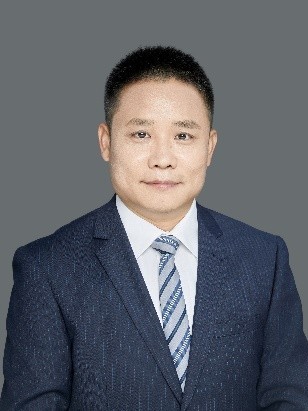
Name: Assoc. Prof. Chao Ren
Affiliation: Tianjin University, China
Biography: Chao Ren, associate professor and doctoral supervisor at Tianjin University, currently serves as deputy director of the Tianjin Key Laboratory of Unmanned Swarm Systems and Systems, member of the Intelligent Control and Systems Professional Committee of the Chinese Institute of Command and Control, and member of the Youth Working Committee of the Chinese Instrument and Control Society. He has long been engaged in the design and control of underwater multi-joint robots, as well as the control technology and application research of underwater bionic snake-like robots, achieving a series of innovative results. He has presided over more than 10 national and provincial/ministerial-level projects, published over 60 high-level journal or conference papers, obtained more than 10 authorized patents, and approved one group standard. Currently, he holds positions such as deputy director of the Tianjin Key Laboratory of Intelligent Unmanned Swarm Technology and Systems, member of the Intelligent Control and Systems Professional Committee of the Chinese Institute of Command and Control, and member of the Youth Working Committee of the Chinese Instrument and Control Society. As exhibition chair, publicity chair, and technical committee member, he has organized the 13th, 19th, and 20th IEEE International Conferences on Robotics and Biomimetics (ROBIO 2016, 2022, 2023) and the IEEE International Conference on Intelligent Robots and Systems (IROS 2022), a top-tier conference in the field of robotics.
Speech Title: Research Progress on Underwater Snake-like Robots
Abstract: Underwater snake-like robots are a type of slender bionic robot characterized by high flexibility and strong environmental adaptability, with broad application prospects in marine exploration, national defense, and water conservancy and hydropower. Based on the number of installed thrusters, underwater snake-like robots can be categorized into:
This report primarily presents the research progress of our team in the following areas:
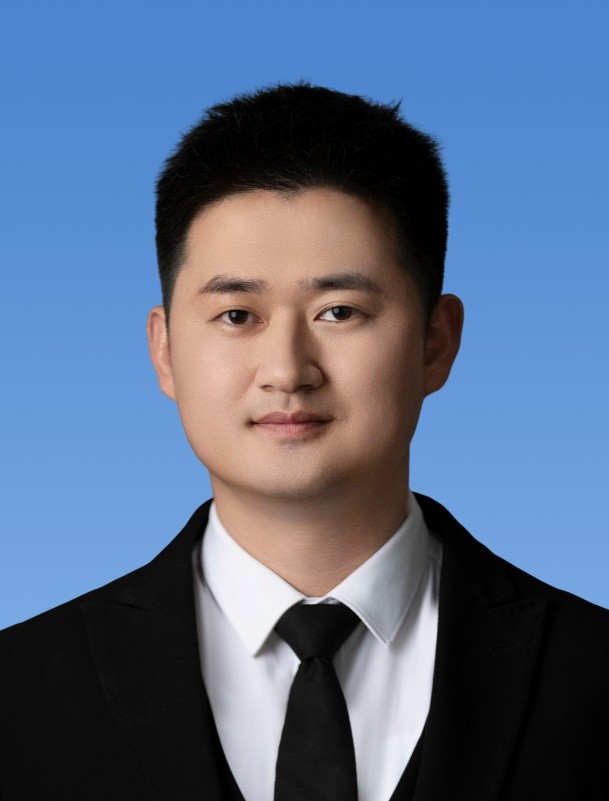
Name: Dr. Peng Wang
Affiliation: Tianjin University, China
Biography: Peng Wang is an Assistant Research Fellow at the School of Mechanical Engineering, Tianjin University. His research focuses on the design theory and methodologies of deep-sea unmanned underwater vehicles (UUVs). He led the development of the hadal-class underwater glider Petrel-X, which set the world record for the deepest dive by an underwater glider in 2020 (10,619 m) and was included in UNESCO’s Ocean Best Practices System in 2023.
Speech Title: The Petrel-X Hadal Glider: Present Status and Future Plans
Abstract: Underwater gliders are increasingly utilized for marine observation because of their considerable advantages, such as compact size, extended operational endurance, and low energy consumption and costs. The gliders also have emerged as one of potential platforms for hadal observation. Moreover, there is an urgent need for innovative technological solutions in hadal scientific research to facilitate long-term, large-scale, real-time, and economical multidisciplinary exploration of the Hadal Zone. Seizing this opportunity, Tianjin University initiated the development of a hadal glider.
The development project for a hadal glider commenced in 2016. Within two years, the first-generation, 10,000-m class hadal glider, named Petrel-X, was successfully engineered. In 2018, deployed in the Mariana Trench’s Challenger Deep, Petrel-X reached a maximum depth of 8,213 m, setting a record for the deepest known dive by an underwater glider at that time. Development and sea trials have yielded extensive experience and advancements in technology. The second-generation hadal glider was named Petrel-XPLUS and was developed with the joint support of Tianjin University and the Laoshan Laboratory. In 2020, Petrel-XPLUS successfully completed three dives exceeding 10,000 m in the Mariana Trench’s Challenger Deep, reaching a maximum depth of 10,619 m.
Future efforts will focus on enhancing the endurance capabilities of the Petrel-XPLUS to enable comprehensive surveys of hadal trenches. Currently, the Petrel-XPLUS can only perform water column observations, which are insufficient for thorough hadal exploration. To overcome this limitation, we aim to develop a landable hadal glider. This new glider will utilize the Petrel-XPLUS framework and incorporate mechanical arms on its head for complex operations such as sample collection and object grasping. Retaining its long-distance operational capabilities, the new glider will offer enhanced flexibility and cost efficiency. Furthermore, it will enable coordinated observations with the Petrel-XPLUS, bridging water column and seabed studies to fulfill complex and diverse mission requirements.

Name: Dr. Shuai Kang
Affiliation: Beijing University of Chemical Technology, China
Biography: Shuai Kang, Ph.D. in Mechatronics Engineering, is a Lecturer and Master’s Supervisor at the College of Mechanical and Electrical Engineering, Beijing University of Chemical Technology. He obtained his Ph.D. in June 2022 from the State Key Laboratory of Robotics, Shenyang Institute of Automation, Chinese Academy of Sciences. From June 2022 to June 2024, he conducted his postdoctoral research at the Beijing University of Chemical Technology. His research primarily focuses on underwater robotics and embodied artificial intelligence. As project leader, he has presided over four research projects, including those funded by the National Natural Science Foundation of China. His work has been published in journals such as Ocean Engineering, IEEE Robotics and Automation Letters, Biomimetic Intelligence and Robotics, Journal of Mechanical Engineering, and Robot.
Speech Title: Dynamic Modeling and System Development of a Tandem Multibody Autonomous Underwater Vehicle
Abstract: Autonomous underwater vehicles (AUVs) play a crucial role in safeguarding maritime rights and interests. To address the limitations of conventional AUVs in detection capability and operational performance, our research proposes a tandem multibody AUV (TMAUV) system capable of carrying larger acoustic arrays for enhanced target detection. This research focuses on the design, hydrodynamic characterization, and dynamic modeling of TMAUVs. A three-unit prototype was developed, featuring a parallel thruster arrangement and passive hinged connections with damping and limit mechanisms. A particle swarm optimization-based neural network was applied to predict straight-line drag, while a novel hydrodynamic model incorporating memory effects and inter-unit interactions was established. Furthermore, a multibody dynamics model based on the Lagrangian method with piecewise mechanical joint representations was developed and validated through simulations and lake experiments. This work provides a systematic foundation for the optimization design and control of TMAUVs.
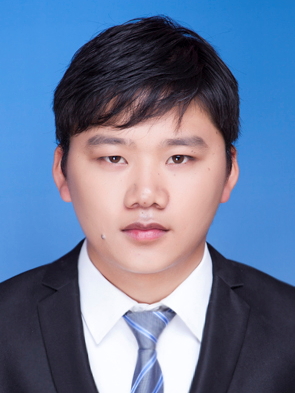
Name: Assoc. Prof. Zhong Huang
Affiliation: Hainan University, China
Biography: Zhong Huang, Associate Professor and Ph.D. Supervisor at the School of Information and Communication Engineering, Hainan University. He earned his Ph.D. in Electrical Automation and Information Engineering from Tianjin University, with joint training at the Department of Aerospace and Mechanical Engineering, Arizona State University. Specializing in bionic underwater robot design and intelligent control, his research interests include biomimetic design, motion control, computational fluid dynamics, underwater localization and navigation, and path planning. He has published over 10 academic papers in international journals on robotics and filed more than 10 patents for innovative technologies. Additionally, he has led research projects totalling over 9 million RMB. Dr. Huang is committed to bridging the gap between fundamental research and real-world engineering, contributing significantly to the development of advanced robotic systems.
Speech Title: Dual-Fin Cooperative Actuation Mechanism of Bionic Ocean Sunfish Robot for Multiple Swimming Motions
Abstract: Bio-inspired robotic fish are superior to traditional underwater vehicles thanks to their high efficiency, agility, and little fluid disturbance. However, the current motion performance of most robotic fish remains significantly inferior to that of real fish, posing challenges for their application in engineering. In this study, we present the design of a bionic ocean sunfish robot, featuring only two symmetrical vertical propulsors that can flap in coordination to perform multiple swimming motions. To our knowledge, this is the first bionic ocean sunfish robot ever developed. We not only imitated the biological appearance of the ocean sunfish but also realized the motion function of the imitation. Underwater experiments demonstrated that the robot exhibits multiple swimming motions, excellent swimming performance, high stability, and three-dimensional maneuverability, making it suitable for tasks in complex underwater environments. Additionally, the robot’s simple structure and low production cost make it ideal for mass manufacturing, particularly in applications such as multi-robot swarms.